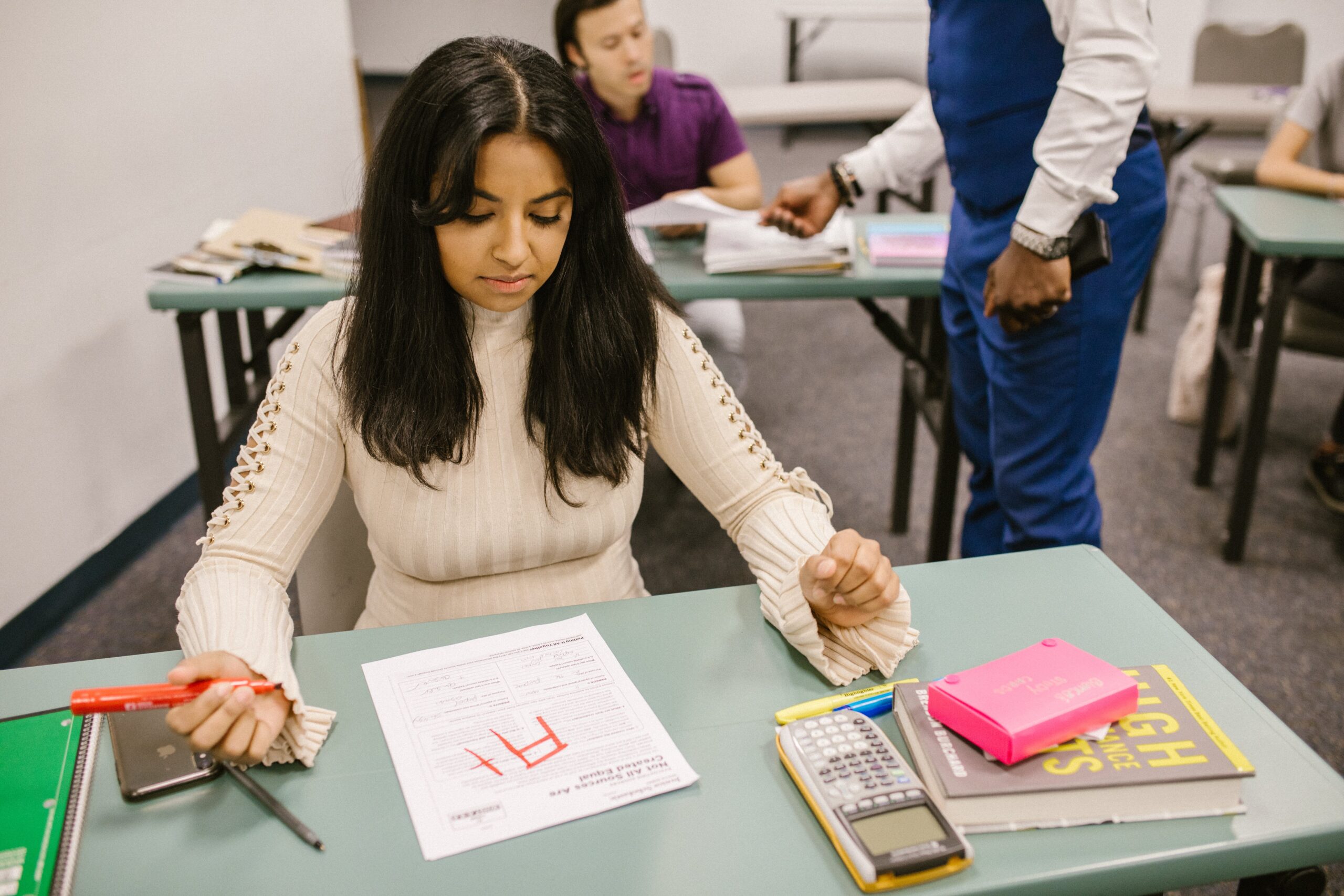Education is often considered the foundation for success, a pathway that equips individuals with the knowledge and skills needed to navigate the complexities of the real world. However, there is a growing discourse that traditional school systems, while aiming to prepare students for the future, may inadvertently train them to fail in the real world.
In this exploration, we will delve into the ways in which schools might fall short in cultivating crucial life skills, fostering creativity, and adapting to the evolving demands of the modern world.
1. Overemphasis on Grades over Learning
One of the primary criticisms of traditional education systems is the overemphasis on grades as a measure of success.
From an early age, students are conditioned to prioritize high grades over genuine understanding and curiosity. This focus on grades as the ultimate validation of academic achievement can lead to a narrow and superficial approach to learning.
In the real world, success is often determined by the ability to apply knowledge, think critically, and solve complex problems—qualities that go beyond the confines of a letter grade. When students are trained to prioritize grades above all else, they may struggle to adapt to environments where collaboration, innovation, and practical application of knowledge are paramount.
2. Limited Emphasis on Critical Thinking and Creativity
While traditional education places significant importance on memorization and regurgitation of information, there is a perceived lack of emphasis on critical thinking and creativity.
Real-world challenges rarely have straightforward solutions, and the ability to think critically and creatively is essential for navigating ambiguity and finding innovative solutions. Schools that prioritize rote memorization and standardized testing may inadvertently stifle the development of these crucial skills.
In the real world, success often hinges on the ability to approach problems with creativity, adaptability, and a willingness to think beyond established norms.
3. Inadequate Preparation for Practical Life Skills
The traditional curriculum often falls short in preparing students for practical life skills that are essential for success outside the classroom. Basic financial literacy, effective communication, time management, and problem-solving in real-world scenarios are often overlooked or underemphasized.
As a result, graduates may find themselves ill-equipped to face the challenges of adulthood, including managing finances, navigating relationships, and making informed decisions. The gap between academic knowledge and practical life skills can leave individuals feeling unprepared and overwhelmed when confronted with the complexities of the real world.
4. Limited Emphasis on Emotional Intelligence and Social Skills
Success in the real world is not solely contingent on academic achievements; it also relies heavily on emotional intelligence and strong social skills.
The ability to communicate effectively, collaborate with diverse teams, and navigate interpersonal relationships is crucial in professional and personal spheres. Traditional education systems, with their focus on individual achievement and standardized testing, may not adequately foster the development of emotional intelligence and social skills.
Students may find themselves entering the real world with a gap in their ability to connect with others, collaborate effectively, and navigate the nuanced dynamics of social interactions.
5. One-Size-Fits-All Approach to Learning
The traditional education model often adopts a one-size-fits-all approach to learning, treating all students as if they have identical learning styles, strengths, and interests.
This standardized approach may not cater to the diverse needs of individual students, potentially leaving some behind or stifling their unique talents. In the real world, success often requires individuals to leverage their unique strengths, skills, and interests.
A more personalized and adaptive approach to education, considering diverse learning styles and preferences, can better prepare students for a world that values individual contributions and embraces diversity.
6. Lack of Preparation for Rapid Technological Changes
The rapid pace of technological advancement is reshaping industries and professions at an unprecedented rate.
However, traditional education systems may struggle to keep pace with these changes, leading to a gap between what is taught in schools and the skills demanded by the evolving job market. Graduates may find themselves entering a workforce that requires technological literacy, adaptability to new tools and platforms, and a willingness to embrace continuous learning.
Schools that do not prioritize teaching these skills may unintentionally train students to struggle in a world where technological fluency is increasingly essential.
7. Limited Exposure to Real-World Challenges
Traditional education often takes place in a controlled environment, divorced from the real-world challenges and complexities that individuals will face in their personal and professional lives. While theoretical knowledge is undoubtedly valuable, the lack of exposure to real-world scenarios may leave graduates feeling unprepared to tackle practical challenges.
Experiential learning, internships, and real-world problem-solving opportunities are crucial for bridging the gap between academic knowledge and practical application. Schools that fail to provide these experiences may unintentionally contribute to a sense of unpreparedness when individuals confront the complexities of the real world.
Strategies for Bridging the Gap
Recognizing the potential shortcomings of traditional education systems is the first step toward implementing positive change. Several strategies can be considered to bridge the gap and better prepare students for success in the real world:
1. Shift the Focus from Grades to Mastery
Reorienting the educational paradigm to prioritize mastery of content and skills over grades can foster a deeper understanding and appreciation for learning.
Emphasizing a growth mindset, where effort and improvement are valued, can encourage students to view challenges as opportunities for learning rather than as obstacles to success.
2. Promote Critical Thinking and Creativity
Integrate critical thinking and creativity into the curriculum through project-based learning, problem-solving exercises, and open-ended assignments. Encourage students to question assumptions, think independently, and explore innovative solutions to real-world problems.
Providing opportunities for creative expression can foster a mindset that values ingenuity and outside-the-box thinking.
3. Incorporate Practical Life Skills into the Curriculum
Expand the curriculum to include practical life skills such as financial literacy, time management, effective communication, and decision-making. Real-world scenarios and case studies can be integrated into lessons to provide students with a practical understanding of how academic knowledge applies to everyday challenges.
4. Emphasize Emotional Intelligence and Social Skills
Include components of emotional intelligence and social skills development in the curriculum. Incorporate activities that promote effective communication, teamwork, and conflict resolution. Create a supportive and inclusive learning environment that encourages collaboration and the development of interpersonal skills.
5. Personalize Learning Experiences
Adopt a personalized learning approach that accommodates diverse learning styles, interests, and strengths. Provide students with choices and flexibility in their learning paths, allowing them to explore areas of interest and leverage their unique talents.
Personalized learning plans can better prepare students for a world that values individual contributions.
6. Integrate Technology and Digital Literacy
Embed technology and digital literacy education into the curriculum, ensuring that students are familiar with essential tools and platforms. Incorporate real-world applications of technology, such as coding exercises, data analysis projects, and digital communication skills.
Prepare students for the technological demands of the modern workforce by fostering a comfort with and adaptability to emerging technologies.
7. Facilitate Experiential Learning Opportunities
Create opportunities for experiential learning, internships, and exposure to real-world challenges. Collaborate with businesses, community organizations, and professionals to provide students with hands-on experiences that bridge the gap between theory and practice.
Immersive learning opportunities can enhance students’ confidence and preparedness for the complexities of the real world.
8. Encourage Continuous Learning and Adaptability
Foster a culture of continuous learning and adaptability by instilling a love for learning and curiosity. Emphasize the importance of resilience, adaptability, and a growth mindset in navigating an ever-changing world. Equip students with the skills and mindset needed to embrace lifelong learning and thrive in environments that demand constant evolution.
Conclusion
While traditional education systems have undoubtedly played a pivotal role in shaping individuals and societies, it is essential to critically examine their potential shortcomings. The realization that schools may unintentionally train individuals to fail in the real world prompts a call for innovative approaches that better align education with the demands of the 21st century.
By shifting the focus from grades to mastery, promoting critical thinking and creativity, incorporating practical life skills, emphasizing emotional intelligence and social skills, personalizing learning experiences, integrating technology and digital literacy, facilitating experiential learning opportunities, and encouraging continuous learning and adaptability, we can begin to bridge the gap between traditional education and the real-world skills needed for success.
In the pursuit of a more holistic and relevant education, it is crucial to foster an environment that not only imparts knowledge but also cultivates the skills, mindset, and adaptability necessary for individuals to navigate the complexities of the real world with confidence and resilience.




